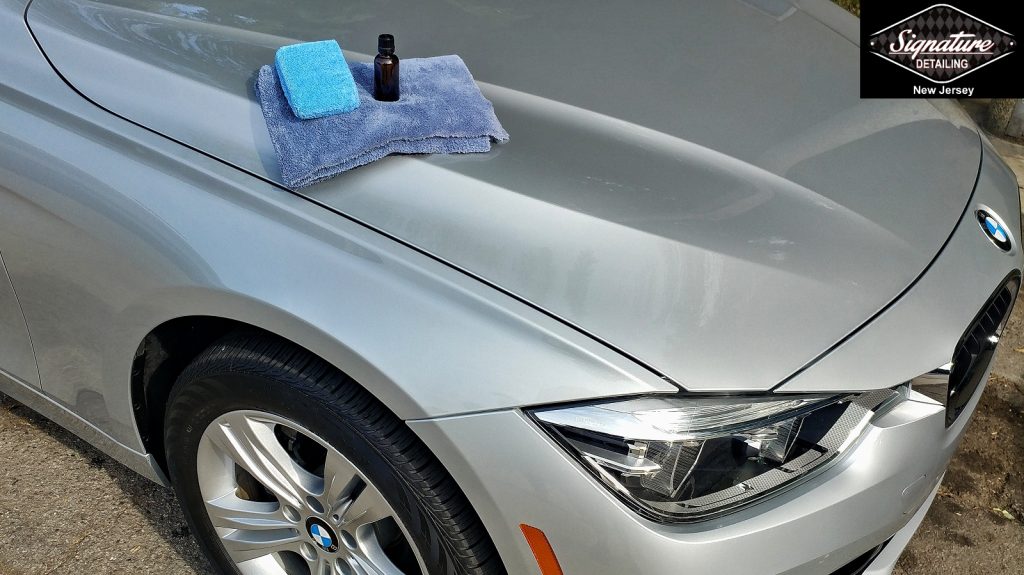The Long-Term Advantages of Finding Ceramic Coating Philadelphia for Your Car
The Long-Term Advantages of Finding Ceramic Coating Philadelphia for Your Car
Blog Article
Why Ceramic Layer Is the Ultimate Solution for a Perfect Finish
Ceramic covering has actually emerged as a leading solution for those looking for a remarkable surface for their lorries, many thanks to its remarkable sturdiness and protective features. What elements absolutely set ceramic finishing apart?
What Is Ceramic Coating?

When applied correctly, ceramic coating develops a hydrophobic surface area that fends off water and dust, making it simpler to clean up and maintain. Unlike standard waxes or sealers, which generally offer short-lived security, ceramic finishes can last for a number of years, relying on the item high quality and application method. The process of using ceramic covering calls for careful preparation, including detailed cleansing and occasionally repaint modification, to make certain optimal bonding and performance.
Ceramic coverings are not limited to automotive surface areas; they can also be made use of on numerous products, including glass, steel, and plastics, supplying a versatile solution for enhancing protection. On the whole, ceramic covering represents a significant advancement in surface area defense technology, incorporating both visual and useful benefits for a vast array of applications.
Advantages of Ceramic Layer
While several surface area defense alternatives exist, the benefits of ceramic finishing attract attention due to its special buildings and resilient efficiency. One of the main benefits is its extraordinary sturdiness. Ceramic Coating Philadelphia. Unlike traditional wax or sealants that require regular reapplication, ceramic finishes offer a resistant layer that can last for a number of years, significantly reducing upkeep initiatives
Another notable benefit is enhanced defense versus ecological impurities. Ceramic coatings produce a hydrophobic surface that drives away water, dust, and various toxins, making it simpler to clean. This attribute not just preserves the automobile's look but also reduces the danger of corrosion and oxidation, particularly in extreme weather condition conditions.
Furthermore, ceramic coatings offer superior resistance to UV rays, avoiding fading and destruction of paint over time. This UV defense is essential for preserving the visual value of surface areas and cars exposed to direct sunshine.
In addition, the shiny finish achieved with ceramic coating boosts the general visual charm, giving surfaces a showroom-quality sparkle. Generally, ceramic layers stand for a significant development in surface area protection technology, supplying long-lasting advantages that provide to both aesthetic and practical demands.
How It Works
Understanding the scientific research behind ceramic coatings reveals exactly how they give such exceptional security and longevity. At its core, a ceramic covering is a liquid polymer that chemically bonds with the car's factory paint.
The application procedure entails several actions, including surface area prep work, which is vital to accomplishing optimum bond. As soon as applied, the finishing undertakes a healing procedure, throughout which it solidifies and develops a semi-permanent bond with the paint surface. This bond is what distinguishes ceramic finishes from traditional waxes and sealers, supplying a longer-lasting safety obstacle that can sustain for years.
Furthermore, the density of the coating can boost its protective high qualities, making sure that it can withstand rough problems. Inevitably, the scientific research of ceramic finishings combines advanced products with innovative application strategies to provide an unmatched degree of defense top article and aesthetic improvement for cars.
Comparison With Typical Methods
The advantages of ceramic finishes come to be specifically evident when contrasted to conventional paint security methods such as waxes and sealers. While waxes offer a short-lived shine, normally lasting a couple of weeks to a pair of months, ceramic finishes supply a durable safety layer that can endure for a number of years. This durability dramatically minimizes the frequency of reapplication, making ceramic layers a much more cost-efficient solution gradually.
In addition, traditional approaches typically require considerable preparation and numerous applications to accomplish an adequate degree of defense. On the other hand, ceramic finishings bond at a molecular degree with the lorry's surface area, producing a robust guard against environmental impurities like UV rays, acid rain, and road salts. This bond improves the lorry's resistance to scratches and swirl marks, which are widespread with conventional waxes and sealers.
Furthermore, the hydrophobic homes of ceramic layers push back water and dirt, leading to simpler cleaning and upkeep. On the other hand, wax and sealant-treated surface areas can bring in crud, requiring more regular washing - Ceramic Coating Philadelphia. Overall, ceramic layers not just supply premium security yet likewise provide an extra visually attractive and long-lasting surface, developing them as the favored option for discerning vehicle proprietors
Application and Upkeep Tips

Utilizing a foam applicator, apply the finishing in tiny areas, adhering to the maker's guidelines pertaining to density and overlap. Permit adequate treating time between coats, commonly 24-hour, to make certain proper bonding. After application, it is critical to avoid direct exposure to water or rough aspects for a minimum of a week to permit the layer to fully cure.
For maintenance, clean the lorry frequently with pH-balanced soaps and prevent abrasive products. Touchless cars and truck cleans are suggested to decrease scraping. Furthermore, using a ceramic upkeep spray can boost the coating's hydrophobic residential properties and durability. Normal evaluations for web any type of indications of wear will assist maintain the finishing's honesty and preserve that pristine finish.
Conclusion
Finally, ceramic finishing becomes a premium alternative for accomplishing a remarkable automobile finish. Its extraordinary sturdiness, protective qualities, and hydrophobic homes dramatically improve the car's look while streamlining upkeep efforts. By forming a robust bond with manufacturing facility paint, ceramic finish properly guards against scratches, UV rays, and ecological contaminants. With a life-span extending several years, this innovative service not Full Article just protects however also elevates the overall visual charm of cars, making it a cost-efficient financial investment for automobile enthusiasts.

Report this page